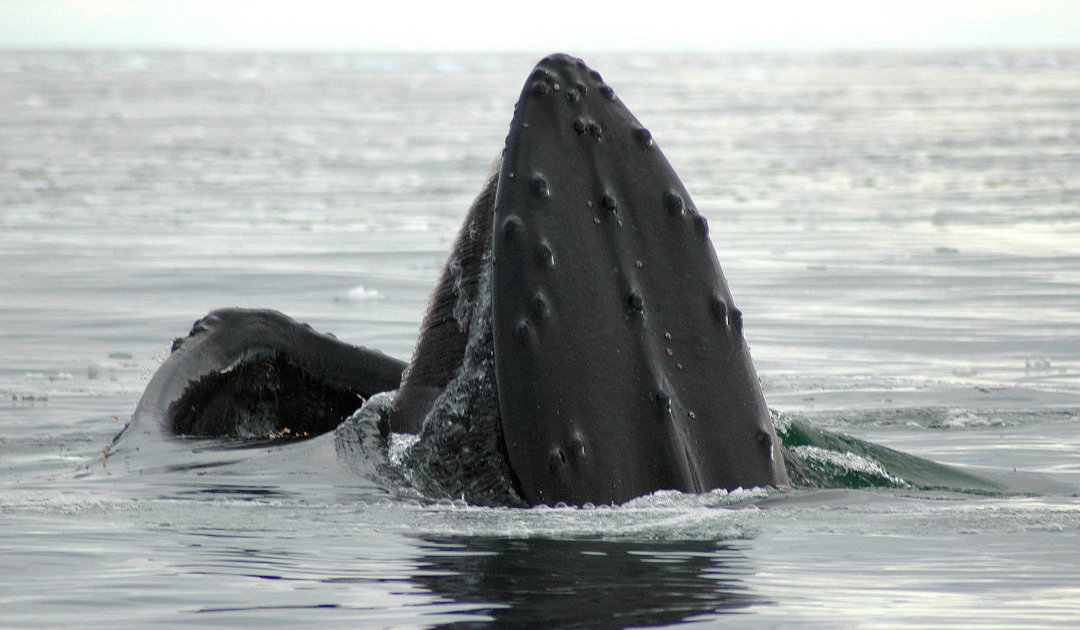
The largest animals on earth — blue whales, fin whales and other baleen whales — feed on the smallest. They take up large amounts of water in their huge mouths and yet they do not drown. Scientists at the University of British Columbia have now investigated the mechanism behind this and how the whales manage to swallow only the prey, but not the water. Their study was recently published in the journal Current Biology.
Cetaceans have developed very different mechanisms and strategies for feeding during their evolution. While toothed whales usually chase after single, relatively large prey, baleen whales target much smaller prey that they filter out of the water, such as krill and small fish. A very special technique used by rorquals — a family of baleen whales that includes blue whales, fin whales and humpbacks, for example — is called “lunge feeding”, in which the whales take a large amount of water into their mouths, which is then filtered through their baleen. The water is released and the prey remains in the baleen and is swallowed.

The researchers studied a total of 19 fin whales and found that they have a fleshy plug in their mouths that seals off the upper airway during feeding. At the same time, their larynx closes to block the lower airway. This prevents water from entering the lungs when food is ingested.
“It’s kind of like when a human’s uvula moves backwards to block our nasal passages, and our windpipe closes up while swallowing food,” said lead author Dr. Kelsey Gil, a postdoctoral fellow in the Department of Zoology at the University of British Columbia.
In their studies, the researchers found that the oral plug must move to the back of the head and upward to block the nasal passages during swallowing. At the same time, the laryngeal inlet closes and the laryngeal sac moves upward to close the lower airway, Dr. Gil said. “We haven’t seen this protective mechanism in any other animals, or in the literature. A lot of our knowledge about whales and dolphins comes from toothed whales, which have completely separated respiratory tracts, so similar assumptions have been made about lunge-feeding whales.”

The particular anatomy and mechanism by which the airways are sealed are key to the development of lunge feeding, which in turn is what makes the whales’ enormous size possible in the first place, the researchers explained. “Bulk filter-feeding on krill swarms is highly efficient and the only way to provide the massive amount of energy needed to support such large body size. This would not be possible without the special anatomical features we have described,” said Dr. Robert Shadwick, a professor at the University of British Columbia’s Department of Zoology and senior author of the study.

Learning more about whale anatomy is no easy task. Killing whales for scientific purposes is not an option and so scientists often dissect stranded whales in the field. However, because the whales cannot be moved due to their size, the researchers always have little time, as the investigations must be completed before the next high tide. For the current study, therefore, the researchers collaborated with a commercial whaling station in Iceland, from which they obtained tissue that was not used as food.
But what the researchers would most like to do is study lunge feeding on live whales in real time. “It would be interesting to throw a tiny camera down a whale’s mouth while it was feeding to see what’s happening, but we’d need to make sure it was safe to eat and biodegradable,” Dr. Gil said.
There are also many other questions to answer, such as whether whales cough, hiccup or burp. “Humpback whales blow bubbles out of their mouth, but we aren’t exactly sure where the air is from — it might make more sense, and be safer, for whales to burp out of their blowholes,” Dr. Gil said.
In any case, they will continue the research and try to find out as much as possible about the whales’ feeding mechanisms in order to better protect them and their ecosystems.
Julia Hager, PolarJournal





